Overview
With rising trade protectionism and uncertain oil prices, both the world economy and international trade will slow down. India with above 7 % GDP growth will be the fastest growing major economy in the world. However, it will face head-winds with rising climate concerns and the energy bill. India now imports increasing amount of coal, apart from oil and gas. The country will also face a more challenging environment in the neighborhood. China would have slower growth at 6.2 %, but its GDP remains five times that of India’s. Brexit will affect economic growth and political weight of the European Union. US with a 2.2 % rate of growth will remain the world’s leading economy, though its domestic politics will become more fractious. Russia will continue to assert itself in the Middle East. However, friction with the European Union (EU) and United States (US) will drive it further into Chinese arms complicating India’s foreign policy choices. Should the oil prices go up in the event of increased geo-political tensions in the Middle East, recessionary pressures will increase.
Af-Pak
Pakistan is likely to secure an International Monetary Fund (IMF) loan in 2019. It may also see some movement towards the chimera of ‘strategic depth’ it is pursuing in Afghanistan. These two together may seem to be major gains for Imran Khan. But the euphoria may not last long.
The IMF loan is likely to come with an austerity package and demand for devaluation of Pakistan currency. Both could spell doom for Imran Khan’s social agenda for ‘Naya Pakistan’. His drive for ehtisab or ‘accountability’ would produce more polarization; judgements by the National Accountability Bureau (NAB) Courts have targeted opposition parties and the net has been widened to include Zardari, apart from Sharif brothers. The combination of divided polity and increased instability on its western border is likely to strain the economy.
US withdrawal from Afghanistan is the only certainty in a complex situation in that country. Support for Taliban by Russia and Iran is a function of their hostility to the US. Once US troops are gone, the enthusiasm for a Taliban led government will wane. None of the key players – Russia, Iran and China - are comfortable with the extreme brand of Sunni extremism that the Taliban movement represents. They would not be keen to assume financial burden of supporting such a government in Kabul. The US withdrawal will also mean that the coalition support funds for Pakistan will dry up.
Withdrawal of US troops does not necessarily mean collapse of the government in Kabul. Najibullah survived the Soviet withdrawal and Jalalabad offensive by Pakistan. His regime fell only after a cut-off of financial assistance and petroleum supplies. Taliban so far controls 12.5 % of Afghan districts with another 38 % disputed, while the Afghan government controls the major part - 55.6 % .
The extended civil war in Afghanistan will affect the rest of the sub-continent. Its immediate impact will be felt within Pakistan with further radicalization of Pakistan’s society. But its effect will also be felt on both eastern and western borders of Pakistan.
US
President Trump has lost the Republican majority in the House, but managed to increase the lead in Senate to 53 seats from 51 earlier. This configuration would ensure that no impeachment move would succeed. But it also hobbles his domestic choices. The shut-down of the Government on an impasse on a budget issue is a stark reminder of this fact. The US remains the ‘indispensable state’ – China cannot replace it. Russia competes in the military sphere, but does not have its economic strength. The EU is struggling with the uncertainties of Brexit. However, precipitate withdrawal could be as risky as over-reach of Bush years, when US sent troops to both Afghanistan and Middle East.
Democratic victory in the House will not dampen the backlash against China. There is a bipartisan consensus in the US against that country. ‘Pivot to Asia’ was initiated during the Obama years. There are puzzling contradictions in positions taken by both Democrats and Republicans. Democrat’s stance against Russia has gifted a useful ally to China. Trump’s withdrawal from the Iran nuclear deal has raised tensions in the Middle East, and has driven its European allies to take common positions with Russia and China.
If 2019 sees shrinking of America’s global foot-prints, this will not be the result of external factors, but by the choices made by the US Administration.
Russia
Russia has made a successful entry in the Middle East by stabilizing the Bashar-al-Assad regime. It has also become an indispensable partner for Organization of Petroleum Exporting Countries (OPEC) in setting crude price and production levels. Its scope for maneuver on the global scene is limited by EU and US sanctions, which makes it more dependent on China. Unless the latter change their stance, this pattern will persist. Scrapping of the Intermediate Range Nuclear forces (INF) Treaty may raise tensions, and a revival of arms race. But the impact will be different from the Cold War years - it is no longer a bipolar world.
China
Trade dispute with US will continue in 2019. The current truce in the tariff war is a second of its kind. The two countries had decided to resolve major trade issues in 100 days, immediately after President Trump’s inauguration. China is a victim of its success. Its export led growth has made it dependent upon the US market. This has made it vulnerable to US sanctions. The scope for retaliation is limited by the trade surplus it enjoys. The Belt and Road Initiative (BRI), if it was aimed at finding alternate outlets for its exports, will take time to mature. It also involves financially risky investments for geo-political goals in countries like Pakistan. This pattern is unlikely to change despite the Democrats winning majority in the House in US Congressional elections. There is bipartisan consensus on trade with China.
Other countries too are victims of China’s success. Developed economies like Europe and the US are threatened with de-industrialization on a massive scale. In case of developing countries, their nascent industries are suppressed by cheap imports from China.
According to a Financial Times report, China’s benchmark CSI 300 index was the worst performer amongst major stock markets in 2018, dropping by 25 percent during 2018. It lost $ 2.3 trillion – nearly the size of the Indian economy. The Indian stock market grew by 6 % during the year despite the oil price hike, and hike in interest rate by US Federal Bank.
China has lowered the rhetoric against countries like India and Japan to buy time. This is a tactical pause, not a re-think of its aggressive strategy.
EU and Brexit
EU will remain pre-occupied with Brexit. The domestic debate in the United Kingdom (UK ) on the subject revolves around 3 scenarios: Brexit without a deal, Brexit with the deal negotiated by Theresa May and a second referendum favored by the ‘Remaining Camp’. Brexit will create trade uncertainties, even if status quo is maintained in the transition period. This could impact India’s bilateral trade with EU and UK. EU being a major trading partner, this will affect India’s overall trade as well.
Amongst the five major EU countries, Spain and Italy were facing major economic and political problems at home. France and Germany are also going through a period of uncertainty. France saw the worst riots recently with the ‘Yellow Vest’ movement protesting against the price hike. Germany is preparing for a post Merkel future.
Japan
Prime Minister Abe is striking a delicate balance between containing and accommodating China. He took the lead in keeping together the Trans-Pacific Partnership (TPP) idea after the US exit. The grouping TPP-11 is aimed at limiting China’s economic ingress in the Pacific region. Japan is also member of the Regional Comprehensive Economic Partnership (RCEP), which includes China.
On the security front too, Japan has tried both containment and engagement policies simultaneously. Japan is a member of ‘Quad’, which aims at strengthening cooperation between US, Japan, Australia and India in the Indo-Pacific region. Abe struck a conciliatory note during his visit to China in 2018. Japan has agreed to cooperate with China’s BRI. Abe is preparing a revision of Japan’s Pacifist Constitution. Japan already has a large defense budget.
Japan was no doubt as much rattled by President Trump’s summit with the North Korean leader as China, though with opposite calculations. China wishes to keep North Korea as a buffer and create uncertainty in the American calculus, which would be undermined in case of normalization of relations between the two. Japan on the other hand was concerned about direct overture to North Korea without any warning to its allies. These ambiguities of Japanese policies will continue in 2019.
We need to see if Japan diverts more investment into India. This does not require it to make hard political choices between containing or accommodating China.
Middle East
President Trump’s announcement to withdraw 2,000 troops from Syria comes at a time when US was expected to launch its Middle East peace initiative following the US Congressional elections. The success of the initiative would have depended upon US credibility as a strong force and fair arbiter. It also required support of key allies in the region, including Jordan and Saudi Arabia. But the contours are not known; with approaching elections in Israel, and the flux in Saudi Arabia, there may not be enough support to push through any major initiative.
Cease-fire and withdrawal of forces of rival sides from Hodeidah Port in Yemen, while Houthis remain in possession of territory elsewhere, does not mean increase in Iranian influence. It could provide Saudi Arabia and United Arab Emirates (UAE) with a pause, and a chance to cut their losses in an increasingly costly conflict.
Withdrawal of America from JCPOA or the Iran nuclear deal, has created a tense situation in the region. The Iranian President has twice stated that if Iran is not allowed to sell oil, nobody else could.
Central Asia
Increasing proximity between Russia and China would reduce the scope of maneuver for Central Asian Republics (CARs) in 2019. This would be reinforced by the US withdrawal from the region. Surge in energy prices have buoyed up Kazakh and Turkmen economies. Uzbekistan and Kyrgyzstan depend upon remittances of their nationals working in Russia. China continues to be the main beneficiary of oil and gas deposits of Central Asia. Its influence will continue to grow in the region, which Russia considers its ‘near abroad’. China’s BRI will accentuate this trend.
The Kazakh term as a non-permanent member of UN Security Council having come to an end in 2018, Central Asian narrative would find less resonance in the world body. However, its example has encouraged other CARs to make a bid for UN Security Council. This would mean more competition within the Asian group for Council membership. It will be interesting to see how they react to competing pressures from Russia, China and US.
Turmoil in Afghanistan pursuant to US withdrawal will affect the CAR countries in 2019, particularly Uzbekistan and Tajikistan. India has common interests in improving connectivity with the region. The International North-South Transit Corridor (INSTC) and the Chabahar Port are key links to achieving this goal. PM Modi's’ tours to CARs have focused attention to our relations with these countries. Commencement of the interim operation by India Ports Global should increase options for Central Asian countries over a period of time.
Africa
Africa’s growth rebounded to 3.7 % in 2017 from 2.3 % in 2016. If the continent is to break free of the boom-bust cycle linked to commodity trade, it has to build industry and expand trade. The Agreement on the Continent Wide Free Trade Area (CFTA) signed in 2018 could be a beginning towards expanding intra-regional trade. Larger trade grouping would also provide scale to attract investment. However, this would require bringing in the two largest economies – Nigeria and South Africa, which are not so far part of the CFTA. They together account for 1/3rd of African GDP of 2.1 trillion dollars.
Increase in oil prices last year have given boost to economies of Nigeria, Angola and Libya. Due to the political situation, Nigerian and Libyan production has remained below capacity. They also bear the brunt of the Shale revolution. Increase in shale oil production in America has taken up the market share of these countries, which produce comparable grade of light crude. In case of the oil price hike due to impact of US sanctions against Iran, or rise of geo-political tensions, their economies will gain.
Energy
Oil prices, after touching $ 84 per barrel in early October, have come down to $ 52-53 per barrel range. The lowering of oil prices was partly due to the demand-supply situation. However, a major reason was the need to keep the prices low at petrol pumps in the US before the Congressional elections. This moderating factor is no longer there, and 2019 may see rise in crude prices. OPEC + countries, which include Russia, have decided to cut production by 1.2 million barrels per day beginning January 2019. If the US waiver for import of crude from Iran is not renewed, or curtailed, there is bound to be a surge in oil prices despite increased Shale oil production.
The new year will bring difficult choices for India. Stability of South Asia will remain our priority. We must have the capacity and willingness to go it alone in preserving our core interests in our immediate neighborhood. We need to work backward from this proposition to decide the means. This will require greater resources, better delivery and domestic consensus. Sab ka saath, sab ka vikas is the way forward at home and in the region.
(Writer is a Senior Fellow, VIF and former diplomat.)
Image Source: http://kataeb.org/thumbnaile/crop/800/465/InternationalNews/2018-2019.jpg


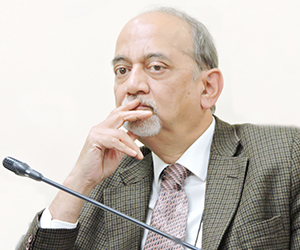
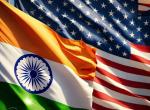

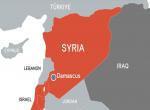
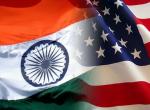


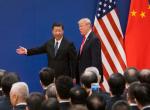
Post new comment